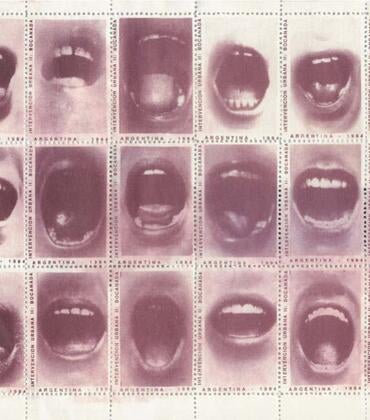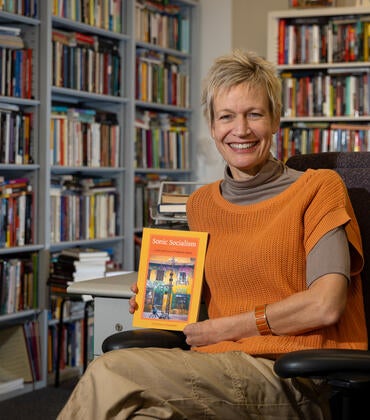
Throughout history, artists have responded to crises through creative expression, and in 2020 — a year marred by a global pandemic and social and political unrest — there has been no shortage of artistic response. But a new exhibition organized by the California Museum of Photography is asking what comes after the dust has settled, and for the first time, is inviting answers from creators worldwide.
“Art in the Plague Year” seeks to present art with a lens toward the future, asking artists to imagine how the world may be molded by the tumultuous events over the past year. The exhibition, which will be presented virtually, is inviting submissions from the public with no restrictions on eligibility during an open call through Dec. 4.
“COVID-19 has swept the globe; it makes sense that this exhibition should follow the same pattern,” said UCR ARTS senior curator Douglas McCulloh. “This is an exhibition built directly on a viral model.”
McCulloh, who will be curating the show along with UCR ARTS’ exhibitions manager Rita Souther and curator of film and media projects Nikolay Maslov, conceived of the exhibition after noting much work was being created in response to current crises, but little has looked beyond the immediate moment.
“A more ambitious goal occurred to me: look at this moment of plague as a portal to the future,” McCulloh said. “History tells us pandemics trigger periods of change; They are seeds of new futures. Consequently, we should seek art as sharp as the world. Art that surveys — even tries to define — the territory beyond the hills of this particular virus. Artists are keen observers and virtuosic dreamers. Therefore, they help mankind navigate into the unknown.”
The name of the exhibition draws from Daniel Defoe’s “A Journal of the Plague Year,” McCulloh said. The book, published in 1722, recounts one man’s experience of the last epidemic of bubonic plague that sweep through London in 1665 and later became known as the Great Plague of London.
Though the exhibition will be presented by the California Museum of Photography, artists are invited to submit artwork in a variety of mediums including photographs, text, video, audio, digital representations of other mediums such as drawings or paintings, animations, and web-based projects, or any combination thereof, so long as it can be presented virtually.
“We’re looking for art which allows some sense of the future to leak into the present,” McCulloh said. “After a flood, it takes the long receding of the waters until we can make out the changed contours of the land. Surrealist Paul Éluard wrote: ‘There is another world, but it is in this one.’”
There is no cost to submit and no restrictions on the type of work accepted. Along with the artwork, artists are asked to provide their names, contact information, and as much background about their work as they see fit. Multiple submissions are allowed, and all submissions must be sent by 11:59 p.m. PST on Dec. 4. Inclusion in the exhibition will be determined by the curators.
“The most exciting thing is not knowing what artists are producing, what we will receive,” McCulloh said. “The unknown is irresistible. If you know your precise destination, why make the journey?”
“Art in the Plague Year” will debut online Jan. 2, 2021, on a dedicated website named after the project, artintheplagueyear.com, where it will remain archived indefinitely. The exhibition will also be featured on Virtual UCR ARTS and the California Museum of Photography website. McCulloh said the scale of the virtual exhibition is part of UCR ARTS’ ambitious pivot into virtual programming — a step catalyzed by the pandemic — which led to the development of Virtual UCR ARTS and has become an important, ongoing initiative that will continue after the physical museum reopens.
Although the presentation of the exhibition is fully online, Souther notes it will be curated much like if it was presented in the physical space of the museum.
“I think this is an opportunity for artists from different geographies, with different backgrounds and practices to converge, and for all of us to get to know them,” Souther said of the exhibition. “The silver lining of the virtual world.”
For more information and to submit artwork, visit artintheplagueyear.com.



